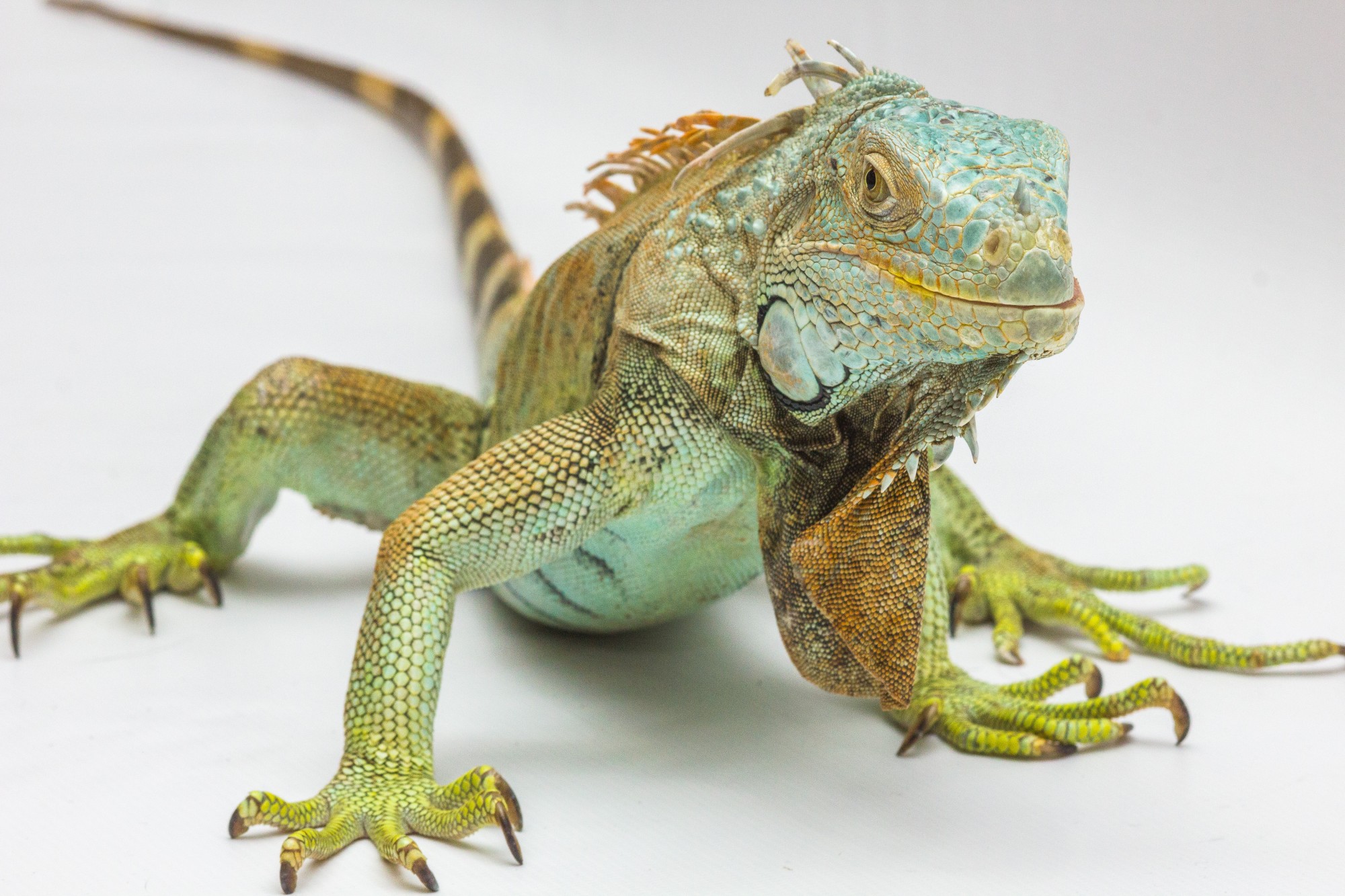When most people think of invasions, their thoughts go to little green men descending in giant UFOs decimating national landmarks a la Independence Day. Well, it turns out that idea is somewhat accurate in Florida right now…though swap out men for lizards and little for 5 feet or more in size.
Yes, iguana overpopulation has resulted in the whole state turning into the green iguana’s permanent vacation home. So what can you do about it?
Well, that’s where we come in. We’re here to tell you everything you need to know about iguana overpopulation! Now let’s jump right into this thing!
The Green Iguana
Despite its name, the green iguana is a reptile native to the Americas that exists in a wide variety of different colors. They didn’t use to live in the U.S, but they’ve slowly come over from Central and South America thanks to exotic pet breeders and accidentally wandering onto boats bound for North America. Florida also faces invasion from the black spiny-tailed iguana and the Mexican spiny-tailed iguana.
Female iguanas can lay upwards of 70 eggs, which they keep in large burrows underground to keep them out of range of predators. While an iguana’s diet consists of plants for the most part, they do eat insects or bird eggs on occasion.
They are not hostile by nature and tend to avoid conflict. That said, they do wield claws and a whip-like tail (which they can regrow if it gets severed) they can use if they feel threatened enough.
How Iguana Overpopulation Happened
The overpopulation problem with iguanas happened because Florida provides an ideal temperature for the cold-blooded reptiles to live. A natural culling of the iguana population used to happen every winter since the reptiles would enter a hibernate state in cold weather, causing many to fall from trees and die on impact. Due to global warming, however, these cold temperatures are rarer than ever, letting the iguanas thrive.
On top of this, Florida lacks the natural predators the iguanas face in other parts of the world, letting their numbers grow even more. The high tourist influx Florida gets also leads to lots of loose food getting littered around, which provides free meals for hungry iguanas.
Why It’s Bad
So if iguanas aren’t carnivores and tend to avoid fighting, what’s the problem? Well, the burrows iguanas dig for their eggs damage the structural integrity of public structures like bridges and roads, and block up water canals.
They will also burrow into the walls and floors of homes and patios. This leads to the lizards damaging pipes and the foundation of these structures.
They also eat way more vegetation than the natural food chain accounts for, depriving other species of the food they need to survive and proving a constant thorn in the side of farmers. To top things off, they leave droppings everywhere, which contain toxic bacteria that can sicken pets if they eat them.
What You Can Do to Fight Back
So how do you combat the invasion? For starters, make sure to fill in any holes on your property you see to deprive the iguanas of potential burrows. Clearing out heavy shrubs and keeping your trees trim will also help, as it removes some of the iguana’s favorite hiding spots for shelter.
If you feel comfortable doing so, it is also currently legal in Florida to kill iguanas (as they count as invasive species). However, this is only legal if you kill them humanely. To avoid undue suffering and breaking the law, you’re better off contacting a professional to remove the iguanas without the use of violence.
Searching For a Solution
So, now that you have everything you need to know about iguana overpopulation, you’re prepared to help repel iguanas while everyone keeps searching for a way to end the overpopulation problem for good! And make sure to check back in on our website for more information about dealing with iguanas!



Comments are closed